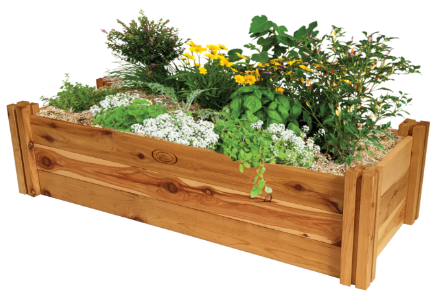
7 Tips for Designing a Successful Garden Bed
Garden beds provide an excellent opportunity to express your creativity and create a unique outdoor space that reflects your personality. With a little bit of planning and hard work, you can transform any patch of land into a beautiful garden bed that's bursting with color and life. Here are seven tips for designing a successful garden bed that will thrive for years to come.
1. Determine the Purpose of Your Garden Bed
Before you start designing your garden bed, you need to determine its purpose. Do you want to create a vegetable garden, a flower bed, or a combination of both? Do you want to attract butterflies or bees to your garden bed? By answering these questions, you can determine the type of plants and design elements that will work best for your garden bed.
2. Choose the Right Location
The location of your garden bed is crucial to its success. Choose a spot that receives at least six hours of sunlight per day and has good drainage. Consider the type of soil in the area and whether it needs to be amended or enriched before planting. Also, make sure the area is easily accessible for watering, weeding, and harvesting.
3. Choose Plants that Thrive in Your Climate
When choosing plants for your garden bed, it's essential to consider the climate of your area. Select plants that thrive in your climate and are suited to the amount of sunlight and moisture the garden bed receives. Plants that are native to your area are also a good option, as they are adapted to the local climate and require less maintenance.
4. Create a Focal Point
Every garden bed needs a focal point. This can be a statue, a unique plant, or a piece of garden art. The focal point should be positioned at the back of the garden bed to draw the eye in and create depth.
5. Add Height and Texture
Adding height and texture to your garden bed is a great way to create visual interest. Consider using trellises, obelisks, or tall plants to add height. Textured plants, such as ornamental grasses or succulents, can add depth and dimension to your garden bed.
6. Use Contrasting Colors
When choosing plants for your garden bed, consider using contrasting colors to create a visually appealing and dynamic display. Colors that are opposite each other on the color wheel, such as red and green or yellow and purple, create a striking contrast.
7. Maintain Your Garden Bed
Maintaining your garden bed is critical to its success. Keep the soil moist, weed regularly, and fertilize as needed. Deadhead flowers to encourage new growth, and prune plants to maintain their shape and size. Regular maintenance will ensure that your garden bed remains healthy and vibrant for years to come.
In conclusion, designing a successful garden bed requires careful planning, attention to detail, and a bit of hard work. By following these seven tips, you can create a unique and beautiful garden bed that will thrive for years to come. Remember to choose the right location, select plants that thrive in your climate, and add height and texture to your garden bed. By maintaining your garden bed regularly, you can ensure that it remains healthy and vibrant for years to come.
References

